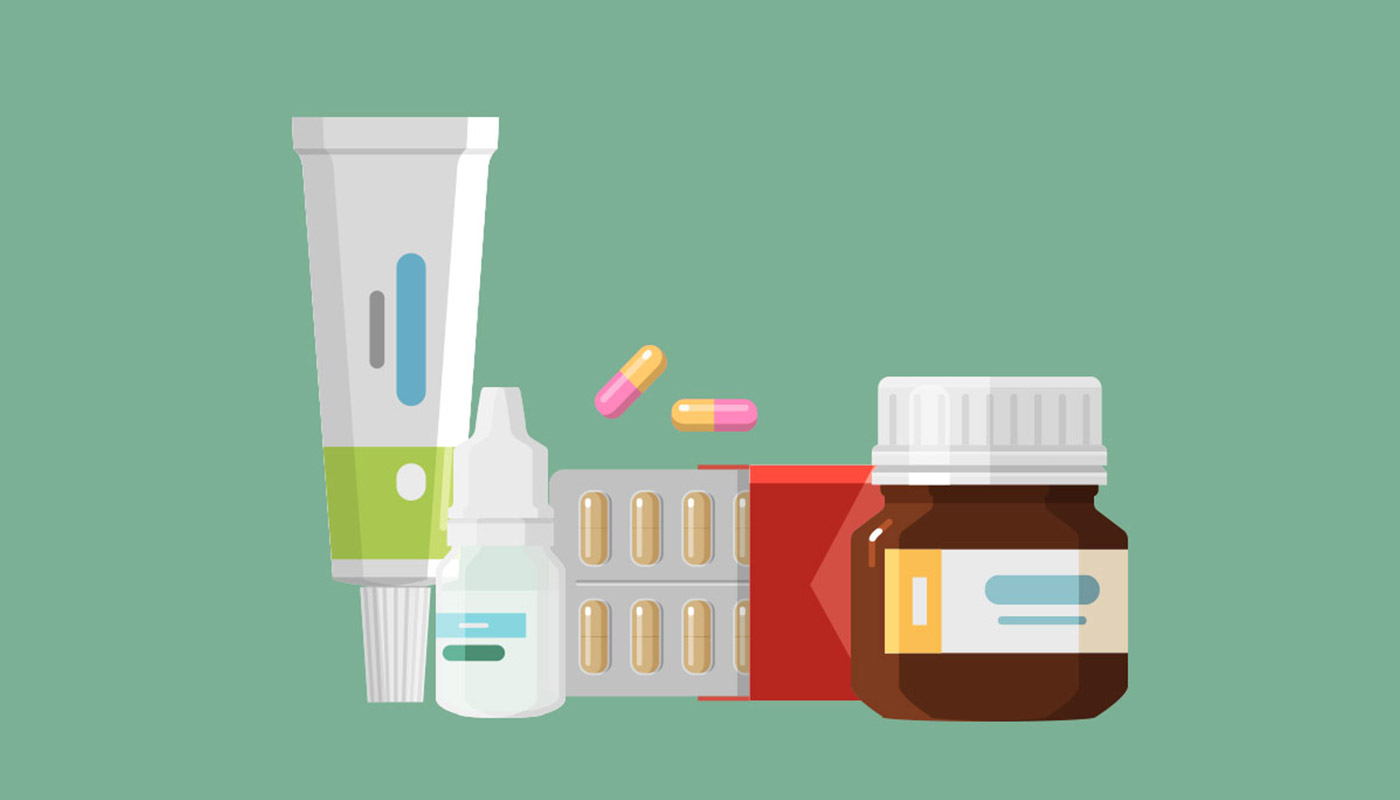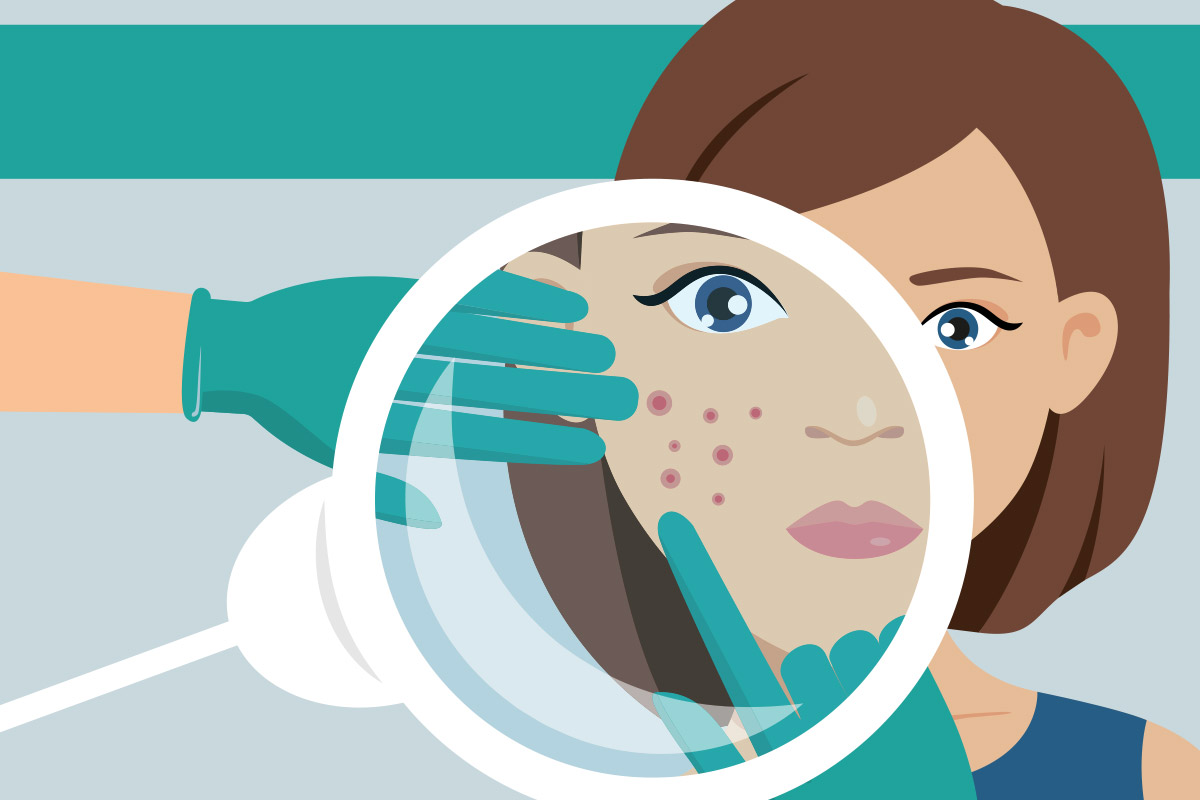Home » Acne Treatments » Acne Medication » Antibiotics For Acne
Antibiotics For Acne
A number of different antibiotics are available
Antibiotics are used for inflammatory acne – small, pink lumps and bumps and pustules on the skin’s surface.
In more serious cases the lumps are larger, deeper and may appear as nodules and cysts in which case, you may need a different treatment to antibiotics.
Antibiotics have been used in acne management for decades, but with increasing concerns about antibiotic resistance there’s a trend to use shorter courses, usually three to six months of treatment.
How do antibiotics treat acne?
Antibiotics work by controlling the skin bacteria (P. acnes) that contributes to acne.
They also have an anti-inflammatory action which can reduce the redness, swelling and pain of pimples.
Types of antibiotics for acne

A number of different antibiotics are available and your doctor will recommend the most suitable product for you.
If one antibiotic doesn’t improve your acne, your doctor may change your dose or change you to a different one to improve effectiveness.
Antibiotic tablets/capsules include doxycycline (such as Doxy, Doryx, Vibratabs), minocycline (such as Minomycin, Akamin) and trimethoprim.
Erythromycin is an antibiotic that may be used in younger patients and during pregnancy. Bactrim is a sulfur-containing antibiotic and is used occasionally.
Using topical antibiotics (creams and gels) can help avoid some side effects that may occur with oral antibiotics, however they may take longer to be effective. They generally have an anti-inflammatory action.
Also, larger areas over the back may be difficult to reach to get a good application.
Topical antibiotic gels and lotions (such as Clindatech and Dalacin) are applied directly onto the skin and left on, not washed off. Those currently used for the treatment of acne contain active ingredients – clindamycin or dapsone. You should use these on a cool, dry face to minimise irritation.
There’s also a combination product (Duac gel) that combines clindamycin and benzoyl peroxide.
How to use antibiotics
A doctor will prescribe an antibiotic gel, solution or lotion with instructions on how often to apply it, which parts of the skin it should be put on, and for how long.
It’s important to follow these instructions carefully.
Other treatments, like topical benzoyl peroxide or retinoid combinations such as Epiduo, are often prescribed in association with antibiotics to obtain maximum benefit.
In most cases you should apply a thin smear once or twice a day to the entire area affected by acne, not just the spots.
This is because topical antibiotics work to reduce visible pimples but also help prevent new ones. Using them regularly over the entire area will lead to much better control of acne.
Oral antibiotics may work faster and tend to be more effective if large areas of your face and body are affected by acne.
Your doctor and pharmacist will tell you when it’s best to take tablets or capsules and whether or not they should be taken with food. They can also provide some practical tips on how to remember to take medications.
Antibiotics usually produce some improvement in 6-12 weeks. Talk to your doctor if your acne isn’t settling down within this timeframe. If this isn’t happening, it may be time to change treatments.
Over the years, antibiotics have saved millions of lives but like all medications, there can be side effects.
Potential side effects of antibiotics
Nausea, diarrhoea and thrush may affect a small number of people taking oral antibiotics.
In some cases, antibiotics used to treat acne may cause headaches. If you think any medications are causing headaches, particularly if this happens in the morning, is not quickly relieved with paracetamol and/or associated with blurring of vision or neck stiffness, you should stop the medication and see your doctor.
Antibiotics can sometimes cause allergic reactions. This is more common with minocycline, rare with doxycycline and uncommon with antibiotic gels and lotions.
Anyone with warning signs or symptoms of allergic reactions, including an unexplained fever, sore throat, swollen neck glands or rash should stop the medication and visit the doctor.
Other symptoms can include joint pain and swelling, nausea, abdominal discomfort, diarrhoea, headache and shortness of breath.
Occasionally fever, rash, joint swelling and pain, skin ulcers and generally feeling unwell due to minocycline allergy can occur several years after first starting therapy. However, keep in mind these are rare side effects.
Uncommonly, topical antibiotic gels and lotions may cause irritation or allergic contact dermatitis. Using it with other acne treatments may increase irritation so it’s best to see your doctor for advice on how to reduce irritation with these medications. Sometimes, gradual application is suggested and the treatment is used every second day or night until it becomes better tolerated on a daily basis.
As with all antibiotics, there is concern that if they are over-used or inappropriately used, strains of the acne bacteria will become resistant to antibiotics, making the medications ineffective.
Taking antibiotics for the full course as prescribed and applying antibiotic creams and gels as directed will reduce this risk.
Reduce the risks
Antibiotic doxycycline can increase sensitivity to the sun so it’s best to take extra precautions to avoid sunburn:
- Avoid being in the sun when the UV alert is above level 3. This is usually in the middle of the day, particularly in summer. Check the Bureau of Meteorology or Sunsmart websites or download the free Sunsmart App to have a daily alert sent to you.
- Stay in the shade whenever possible.
- Wear a hat and other physical protection such as rash shirts at the beach.
- Use sunscreen (labelled non-comedogenic and/or non-acnegenic) regularly.
Combining antibiotic therapy with other acne treatments like benzoyl peroxide cream or wash can help to protect against antibiotic resistance.
Some doctors may recommend that you take a probiotic when you are prescribed oral antibiotics. This can be as simple as a yoghurt drink or spoonful of yoghurt!

Seeing a doctor for acne
When acne makes it difficult for you to enjoy your life, it’s definitely time to see a doctor.
